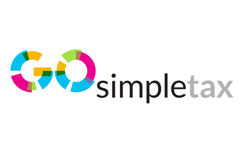
Simple assessment was introduced in September 2017 as a “new way of collecting tax” intended to “make life easier for millions who have had to file self assessment tax returns in the past”.
It was made possible by HMRC making greater use of its tax data to find the information it needed without some taxpayers being required to complete a self assessment tax return. Among those first to benefit were pensioners receiving State Pension above the personal tax allowance. Other people who were able to benefit from simple assessment were employees who had underpaid tax via PAYE and who could not make up the difference via their tax code.
Making tax simpler
Instead of asking some taxpayers to fill in a self assessment tax return, HMRC began using data it already held to calculate how much tax was owed. It began writing to relevant customers with a tax calculation letter (P800) or a simple assessment letter (PA302).
These letters set out the recipient’s estimated income from pay, pensions, state benefits, savings interest and (where relevant) employee benefits. All these recipients needed to do was check that the information was correct, and if so, pay their tax bill before the deadline. Simple and much quicker.
If someone believed that any of the information was incorrect, they had 60 days to contact HMRC. For example, if they believed the income stated was too high or too low or that HMRC hadn’t taken account of any information provided.
 New tax year – new you
New tax year – new you
You can file your self-assessment from the 6th April. Know your tax owed and start the tax year in control.
For self-employed individuals, sole traders, or those with non-PAYE income, GoSimpleTax provides direct self-assessment filing with HMRC, offering helpful hints and savings tips throughout the process. Let GoSimpleTax handle all calculations.
Simple assessment
HMRC continues to send out simple assessment letters. In many cases, these letters are to pensioners, to those who owe HMRC £3,000 or more or need to pay tax on their State Pension. Letters go out by post or are sent electronically to a person’s personal tax account.
The letters show:
- total taxable income
- income tax paid
- income tax owed based on HMRC’s records
Recipients need to verify the information against their own records (ie their P60, bank statements or letters from the Department for Work and Pensions). Those who do not understand the information they have been sent can contact HMRC for clarification.
If someone believes any of the figures are wrong, they have 60 days to contact HMRC to explain which figures are wrong and convey the correct figures. If HMRC accepts the information provided, the taxpayer is sent a new simple assessment letter. If HMRC does not agree, they will write to explain why it disagrees, and how the tax should be paid or appealed.
What is self assessment?
So, basically, simple assessment allows HMRC to collect underpayments of tax from those with relatively straightforward tax affairs. It means those taxpayers don’t need to complete a self assessment tax return.
Self assessment is the system that HMRC uses to collect income tax. As the same suggests, sole traders, freelancers, small landlords and other income tax and national insurance payers assess their own income and expenses and submit a self assessment tax return to HMRC. The information provided in the self assessment tax return is used to calculate how much tax is owed.
The main self assessment tax return (SA100) is eight pages long. There are lots of boxes to fill with information and there can be other supplementary pages to complete and file (depending on the individual’s circumstances). With all the necessary information to hand, some people can complete their self assessment tax return in a few hours. Others might struggle and take much longer, especially those new to self assessment without experience. Simple assessment is a far easier and less time-consuming option.
● Visit GOV.UK to find out more about simple assessment and self assessment tax returns.
Copyright 2024. Sponsored post by Mike Parkes of GoSimpleTax - tax return software that can help you manage your self assessment.